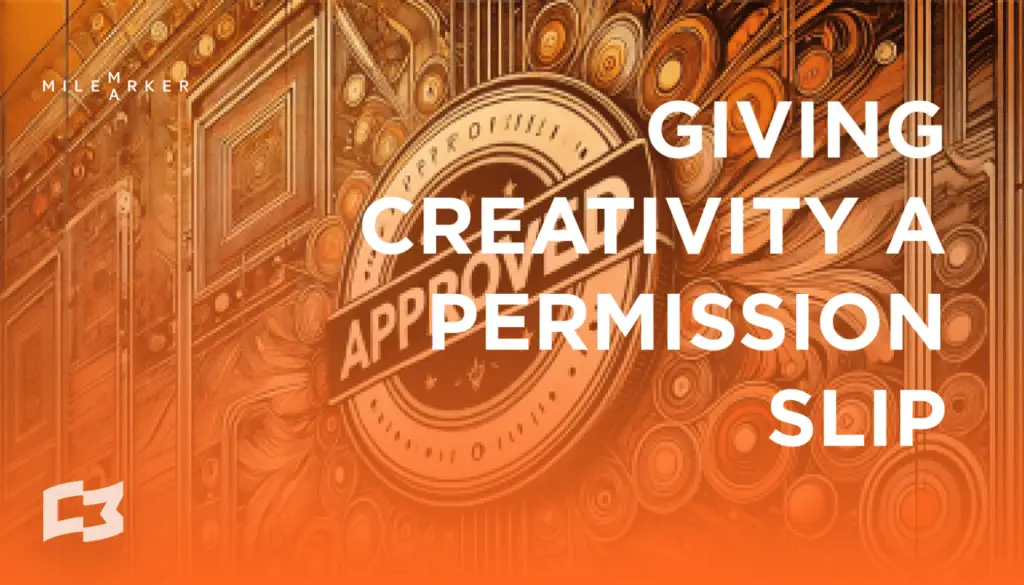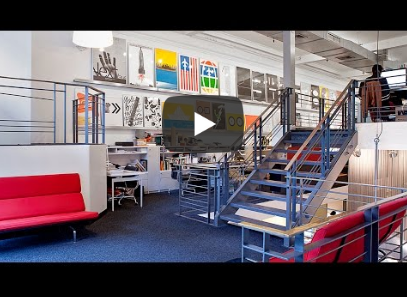How Wealth Management Firms Can Give Creativity a Permission Slip

Most of us can remember specific milestones in our lives where we found life changing inspiration.
There have been times when we heard a band or album that changed our lives, read a book that tilted our reality, met someone who forever changed the course of our lives, or realized that life doesn’t have to be boring.
For me, these are obvious moments in my life.
When I was 15, I spent a day with a graphic designer.
In an instant, I understood that there are people who spend every day solving problems for people through their own creativity and that there are organizations whose entire culture is to help consistently unlock and deliver creativity.
For me, this was a moment where the world shifted.
Finding Financial Services
When I initially landed in the financial services industry, my plan was to make it a pretty temporary stay. It was to be a simple stop on the way to something more creatively rewarding.
The thing that caught my attention came after my first year.
I resigned from my role at Orion because I was moving to Dallas and headed to grad school. My boss’s team hosted my going-away lunch at the local Mongolian Grill when the conversation on the drive back to the office helped us all realize there was probably a creative way for me to stay a part of the team, uniquely add value to our clients and balance work with grad school.
It was a simple, obvious moment of creative clarity that helped me begin to see possibilities outside of what already exists. It gave me permission to question the status quo and consistently look for more innovative solutions.
From that point forward, I began to invest in my work, build unique solutions, and forge a path that I initially hadn’t believed I could take.
Giving Creativity a Permission Slip
That day, Joe Leyboldt gave me a permission slip to dream and I didn’t look back.
I’m sure you’ve had something similar happen in your lives, or hopefully, you have had the opportunity to unlock someone else’s career by finding a creative path for them.
It is important to note that despite their titles, Financial Planning, Investment Management, Financial Services and the like are actually fundamentally creative services.
Of course, the average person who’s interested in creative arts is unlikely to look to finance for inspiration. From the dress code, to the structure, to the expectations, on the surface our industry constantly throws up barriers that keep us from either attracting creative workers or preventing us from showing up with a creative approach to our work.
Creatives are much more likely to look for work in traditional agencies like:
Instrument is a creative agency based in Portland.
Tool of North America is a creative team based in Los Angeles.
Wieden + Kennedy is another Portland-based agency.
All of these teams have changed the world. They are filled with inspired work that has shaped brands like Nike, Ford, Pepsi, and Heinz into identities that far exceed shoes, cars, soda, and ketchup.
These organizations have some very important parts of their culture that we should consider as we look to build the cultures to propel more creative outcomes for our clients.
1. Emphasis on Innovation: These creative companies prioritize creative freedom and innovation, encouraging experimentation and risk-taking in their projects.
While risk mitigation is more commonly the name of the game our industry, our work fundamentally requires risk. We don’t have to be afraid of taking risks. We have the opportunity to make it more interesting and inspired.
2. Collaborative Environment: Creative companies foster a highly collaborative culture, where diverse teams work together, blending different skills and perspectives.
If we are building an assembly line of people who have too much in common, we can see a measurable decline in the creativity of our cultures.
Organizations that are diverse are proven to have higher odds of financially outperforming organizations that are not (25% higher probably based on gender diversity, 36% higher probably based on ethnic diversity).
3.Client Partnerships: Organizations with strong, open partnerships with clients enable deeper understanding and more impactful work. This looks like asking better questions of your clients and investing greater time into truly understanding goals, inspiration, and personality-based outcomes that you really can’t find in broad-based surveys or risk tools.
4. Talent Development: Creative organizations continuously invest in employee development and learning, which keeps the team inspired and at the forefront of industry trends. From simple things like building a library of books and inspirational materials, to opening the door to attend industry events, to encouraging involvement in creative events in our communities, inspiration itself is often an understated but powerful factor in how we develop the talent of our teams.
5.Inspiration at the Top: At the top of the org chart, creative companies have leaders who remain close to the work and are in a position to coach, inspire, and unleash their talent to drive the outcomes that clients are looking for.
One person in the creative community who stands out as an inspiration to me is Paula Scher. Paula has literally changed the world through her work at Pentagram. She leads, inspires, and continues to create each day at her firm.
As I compare our work to Paula’s, I see the same sorts of skills at play in the work of people like Joe Taiber and Phil Kosmala who spend much of their time leading a great Chicago-based wealth management firm but also a world changing Institutional Consulting business that is constantly creating unique solutions for large universities, endowments and organizations.
Who comes to mind when you think about the most creative people in our industry for you?
 How can you inspire creativity inside of your business today?
How can you inspire creativity inside of your business today?

